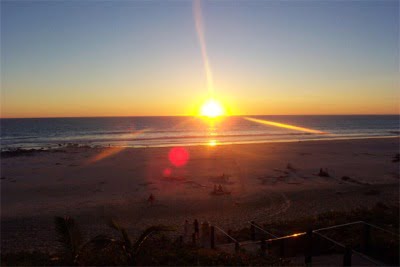Few places in Australia evoke the imagination like Broome. It conjures up images of exotic beaches, pearling, cocktails at sunset and adventure. Well it is hard to imagine just what Broome is like, it really is one of those places that you have to experience. But we will try to paint a picture that does it justice!
Broome is one of the most isolated places in Australia that still has a semblance of civilisation. It is gateway to some of the most beautiful and surprising places on earth.
To gain some understanding of the culture of Broome it is best to visit its rich and diverse history.
It is situated on the traditional lands of the Jukun and Yawuru people. The first European to visit Broome was William Dampier in 1688 and again in 1699. Many of the coastal features of the area are named by him. In 1879, Charles Harper suggested that the pearling industry could be served by a port closer to the pearling grounds and that Roebuck Bay would be suitable. In 1883, John Forrest selected the site for the town, and it was named after the Governor of Western Australia, Sir Frederick Broome.
In 1889, a telegraph undersea cable was laid from Broome to Singapore, connecting to England. Hence the name Cable Beach given to the landfall site.
The town has an interesting history based around the exploits of the men and women who developed the pearling industry, starting with the harvesting of oysters for mother of pearl in the 1880s to the current major cultured pearl farming enterprises. The riches from the pearl beds did not come cheap, and the town’s Japanese cemetery is the resting place of more than 900 Japanese divers who lost their lives working in the industry. Many were lost at sea and the exact number of deaths is unknown.
The Japanese were only one of the major ethnic groups who flocked to Broome to work on the luggers or the shore based activities supporting the harvesting of oysters from the waters around Broome. They were specialist divers and, despite political pressure to expel them in support of the White Australia Policy, became an indispensable part of the industry until World War II.
Broome was attacked by Japanese aircraft on 3 March 1942. The air raid killed at least 88 people. Following the end of the war in 1945, the town and its pearling industry gradually recovered from the disruptions of wartime.
The West Australian mining boom of the 1960s, as well as the growth of the tourism industry, also helped Broome develop and diversify. Broome is one of the fastest growing cities in Australia. While there be sure to visit the chinatown section, browse through the many pearl shops or take in a movie in the open air theatre.
At Gantheaume Point and 30 metres out to sea are dinosaur footprints believed to be from the Cretaceous Age approximately 130 million years ago. The tracks can be seen only during very low tide.
The world famous Cable Beach is situated 7 km from town along a good bitumen road. The beach itself is 22.5 km long with beautiful white sand washed clean daily by tides that can reach over nine metres. The water is crystal clear turquoise, and the gentle swells hardly manage to topple over as they roll up onto the almost perfectly flat beach.
Caution, however is required when swimming from November through March as stingers are present during those months. Four wheel drive vehicles may be driven onto the beach from the car park. This allows people to explore the beach at low tide to a much greater extent than would be possible on foot. But remember to watch the incoming tide. It comes with such a rush and is so high that many vehicles are lost each year. I know I speak from experience as I nearly lost a fully loaded Pajero by not being careful enough! Sunset camel rides operate daily along the beach.
Cable Beach is home to one of Australia’s most famous nudist beaches. The clothes optional area is to the north of the beach access road from the car park and continues to the mouth of Willie Creek, 17 km away. Located directly east of Cable Beach over the dunes is Minyirr Park, a coastal reserve administered by a collaboration of the Shire of Broome and the Rubibi people.
Top 10 things to do!
1.Drink Cocktails overlooking Cable Beach at Sunset
2.Witness the spectacle that is ‘Stairway to the Moon’
3.Visit Wille Creek Pearl Farm
4.Stand in the Footprints of Dinasours
5.Take a sunset Camel ride on Cable Beach
6.Visit the Bird Sanctuary on Roebuck Bay
7.Visit the Broome ‘Courthouse Markets”
8.Take an organised tour to Cape Leveque
9.Go to the Japanese Cemetary
10.Swim ‘Au Naturale” at Nth Cable Beach
11.There is HEAPS more to do as well!!
Accommodation-wise, there are plenty of plush hotels, up-market resorts and pure indulgent eco retreats to choose from. For the budget traveller, there’s a good selection of hostels. Caravanners etc are extremely well catered for with a number of well equipped caravan parks. Bush camping is not permitted.
Remember to book well in advance if you want to travel in the peak periods between May to October and plan to stay a while. The last time the author went to Broome he stayed with his family for 6 weeks and then explored the surrounding regions. Broome is a perfect start or end to the adventure of exploring the famous Kimberly region and the Gibb River Road (which we will discuss in an upcoming article).

